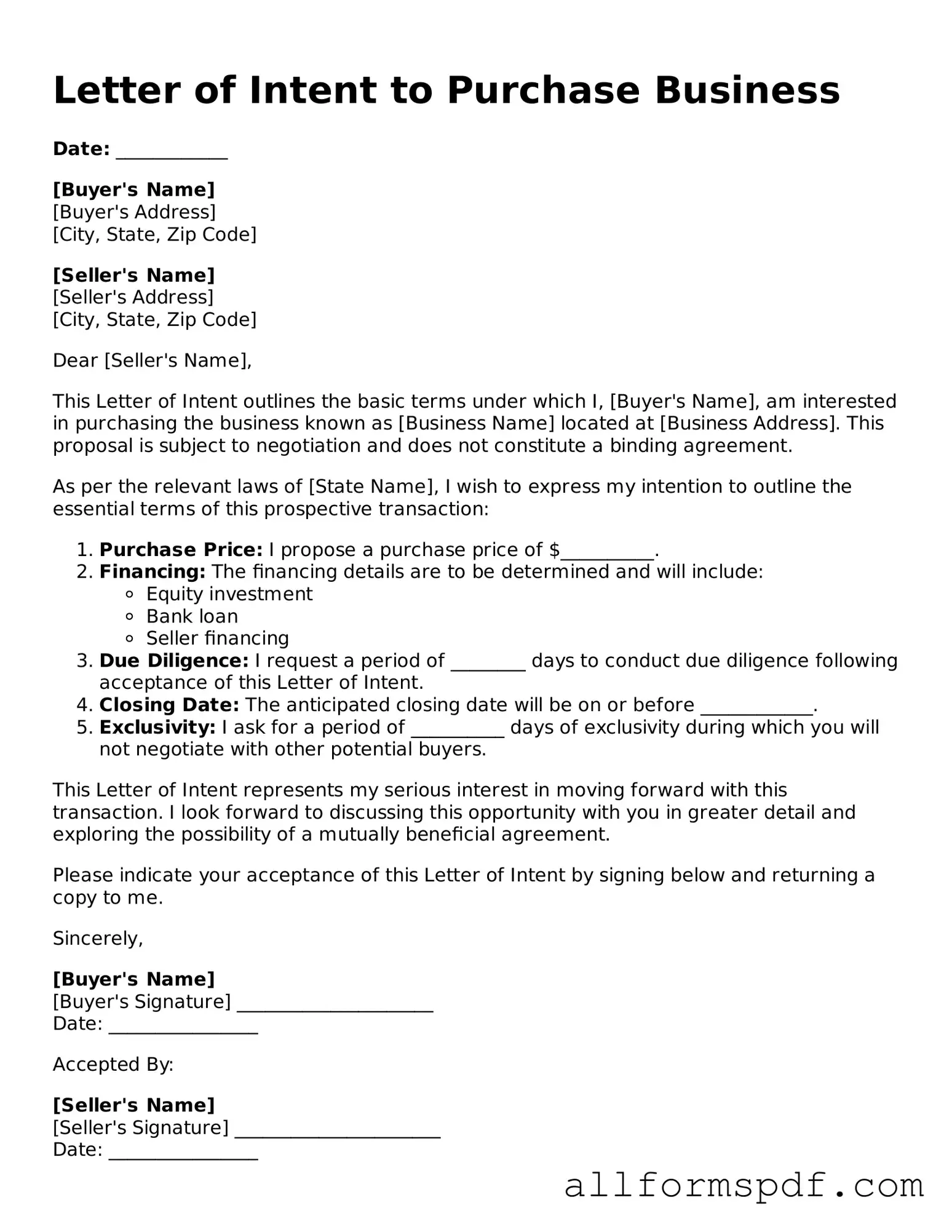Filling out a Letter of Intent to Purchase a Business can be a crucial step in a business transaction. However, many people make common mistakes that can lead to confusion or even legal issues down the line. Here are ten mistakes to avoid.
One frequent error is failing to specify the terms clearly. Buyers often overlook the importance of detailing the purchase price, payment terms, and any contingencies. Without clear terms, misunderstandings can arise, leading to disputes later.
Another mistake is not including a timeline for the transaction. A Letter of Intent should outline key dates for due diligence, closing, and other important milestones. Without this, parties may have different expectations about the timeline, causing frustration.
People often neglect to address confidentiality. If sensitive information is shared during negotiations, it’s essential to include a confidentiality clause. This protects both the buyer and seller from potential leaks that could harm the business.
Some individuals fail to identify all parties involved. It’s important to clearly state who is buying and who is selling. Ambiguity about the parties can lead to complications if someone else becomes involved in the transaction.
Another common oversight is not outlining the conditions for withdrawal. A Letter of Intent should specify under what circumstances either party can back out. Without this, one party might feel trapped, leading to resentment.
Many people also forget to include a statement of intent. This should explain the purpose of the Letter of Intent and what both parties hope to achieve. A clear statement can set a positive tone for negotiations.
Overlooking the need for legal review is another mistake. It’s wise to have a lawyer review the Letter of Intent before signing. They can spot potential issues and ensure that the document complies with applicable laws.
Some individuals write the document in a way that is too vague. Specificity is key. General statements can lead to different interpretations, which can create conflict later on.
People sometimes omit important details about the business being purchased. This includes financial information, assets, and liabilities. Providing comprehensive information helps both parties make informed decisions.
Finally, not keeping a copy of the signed Letter of Intent can lead to problems. Both parties should retain a copy for their records. This ensures that everyone has access to the same information moving forward.
